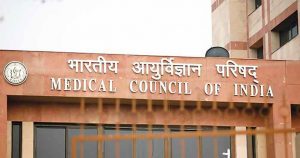Ophthalmology residency training has been a focus of the recent issue of Indian Journal of Ophthalmology. A survey was conducted by the Academic and Research Committee of the All India Ophthalmology Society, in 2014-2016 of young ophthalmologists (with 2-10 years’ post residency experience) revealed gaps in the residency training program. Five hundred and thirty one respondents of the survey with an average age of 32.6 years graded the clinical skills teaching on a scale of 0-10. They reported a skill level of 7.2±2.8 for Slit lamp examination 6.2±3.3 for indirect ophthalmoscopy, 5.7±3.4 for gonioscopy, 6.2±3.2 for perimetry, 4.6±4 for optical coherence tomography and 4.3±3.1 for orthoptic evaluation. The mean (SD) and median number of surgeries performed independently were intracapsular cataract extraction 3.0 (14.9), 0; extracapsular cataract extraction 39.9 (53.2), 18; small incision cataract surgery 75.3 (64.4), 55; phacoemulsification 30 (52.6), 1; pterygium excision 31.5 (43.5), 15; dacryocystectomy 20.3 (38.1), 4; dacryocystorhinostomy 11.7 (26.2), 2; chalazion 46.4 (48.3), 30; trabeculectomies 4 (14.9), 0; strabismus correction 1.4 (4.9), 0; laserassisted in situ Keratomileusis 1.5 (12.2), 0; retinal detachment 1.5 (12.5), 0; vitrectomy 3.0 (17.0), 0; keratoplasty 5.2 (17.8), 0; eyelid surgery 8.6 (18.9), 2 and ocular emergencies 41.7 (52.4), 20. The survey found that observed and assisted surgeries were more common. The results showed a considerable variation in the level of residency training in India and points at a need for more standardization.
(Gogate P, Biswas P, Natarajan S, Ramamurthy D, Bhattacharya D, Golnik K, Nayak BK. Residency evaluation and adherence design study: Young ophthalmologists’ perception of their residency programs – Clinical and surgical skills. Indian J Ophthalmol. 2017 Jun;65(6):452-460.)
 Overall there are 241 medical institutions certified by the MCI for running the MD/MS Ophthalmology course with an annual intake of 1026 students. These include 118 government and 123 private medical colleges. Many more seats are available in the government colleges as compared to the private ones. DNB (147 seats) is available in 86 eye hospitals and departments and 120 medical colleges offer the DO course (355 seats) Therefore there are 1528 recognised seats in India for ophthalmology training.
Overall there are 241 medical institutions certified by the MCI for running the MD/MS Ophthalmology course with an annual intake of 1026 students. These include 118 government and 123 private medical colleges. Many more seats are available in the government colleges as compared to the private ones. DNB (147 seats) is available in 86 eye hospitals and departments and 120 medical colleges offer the DO course (355 seats) Therefore there are 1528 recognised seats in India for ophthalmology training.
The most important aspects to any educational training, particularly ones with skills training are the faculty and equipment. Of course, patient flow has to be adequate but that is usually not the problem in India. The faculty is foremost as they have to plan the course, teach the curriculum and lead by example for delivering the best. If a centre is not equipped with even the basic requirements such as slit lamp biomicroscopes, fundoscopes, gonioscopes, indirect ophthalmooscopes, tonometers, refractometers etc., then it is not possible to have an effective training even with the best of faculty. Surgical equipment come a close second and being a surgical branch, it forms an indispensible requirement. Faculty should be in a position to confidently perform extracapsular cataract extraction and small incision cataract surgery and possibly phacoemulsification in order to teach and assist. Additionally specialty surgery such as squint, DCR and trabeculectomy should be performed for adequate exposure of the residents. As stated by Prof Amod Gupta in his guest editorial (Gupta A. Ophthalmology postgraduate training in India: Stirring up a hornet’s nest. Indian J Ophthalmol 2017;65:433-4.) “It is a paradox that while the trainee ophthalmologists from the western world flock to India for training in phacoemulsification, our own trainees are deprived of this opportunity.” He further states “That they did not get to see or assist posterior segment procedures, corneal grafting, or the laser procedures reflect on the lack of infrastructure and the trained faculty in the training institutes. This calls for a serious introspection by the authority to allow such institutes to keep training the ophthalmologists for the nation.”
Dr Santosh Honaver in his editorial (Honavar SG. Ophthalmology residency training in India: Quo vadis?. Indian J Ophthalmol 2017;65:427-8) in the same issue talks about the less than standard output despite availability of the adequate equipment and trained faculty. He mentions that “Even in situations where the facilities, faculty, training standards, evaluation, and exit criteria are all harmonized, and residency selection is based on meritocracy, the overall quality of the final output is known to vary substantially.” This he blames on the lack of standardization of teaching curriculum and nonholistic training. He quotes the Accreditation Council for Graduate Medical Education (ACGME) concepts of supervised training and graded and progressive responsibility. There is a need to look beyond numbers and teach beyond the books. Interpersonal skills, communication skills, stress management need to be incorporated to achieve this holistic outcome. Additionally, the MCI and national ophthalmology society needs to develop and execute the implementation of a standard training module. Recognized training centres need to follow the established curriculum and take the responsibility of providing equipment and trained dedicated faculty.
Looking at the scenario, it is evident that if we have to achieve the goal beyond just eliminating preventable blindness, then we have a long way to go as a country as far as ophthalmology training is concerned.


